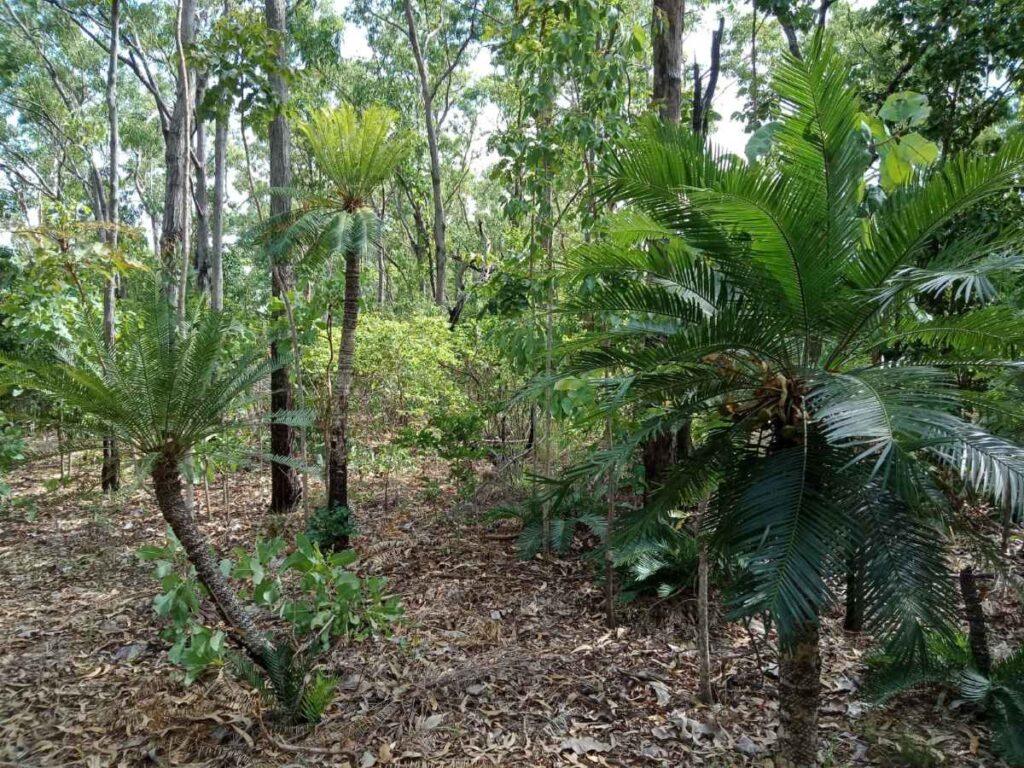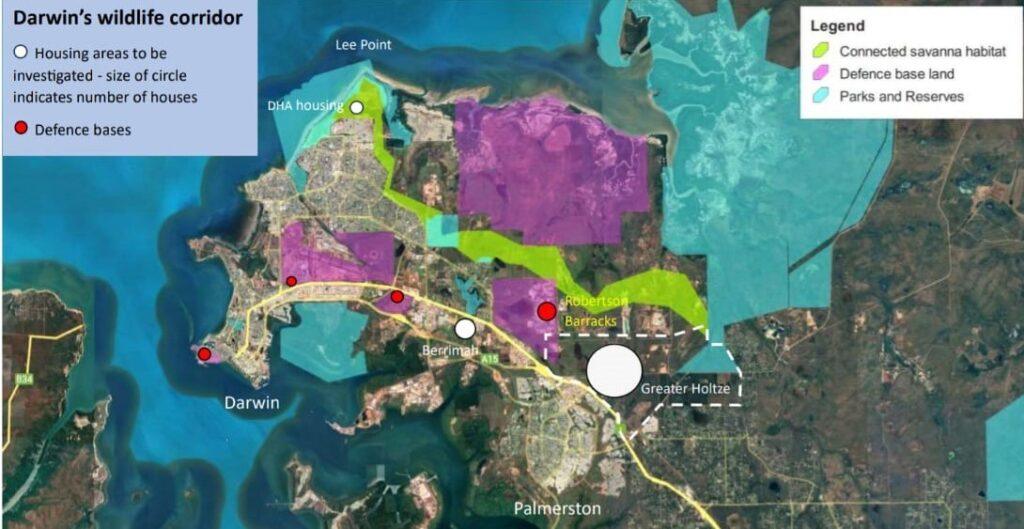EXECUTIVE SUMMARY
The NT Planning Commission has called for public comment on a draft Strategic Directions Planning Policy (SDPP).
Friends of Lee Point Inc. (FLP) believe that Ecologically Sustainable Development (ESD) should be incorporated in the SDPP direction statement in Section 1.0.
Furthermore, some statements in Section 1.0 should be amended to encourage better information and decision-making on natural heritage and biodiversity matters.
Our submission focuses on natural heritage and biodiversity in the Darwin – Palmerston area as part of sustainable development.
CONTENTS
- Background and scope
- Sustainable development
- Suggested changes to Section 1.0
- Summary
1.0 Background and scope
The proposed SDPP is being developed to provide high-level direction on promoting the:
-
- objectives of the NT Planning Act and
-
- Part 2 of the NT Planning Scheme 2020.
NT Planning Act (Act) – Friends of Lee Point (FLP) believe that the Act’s most important objective is the one that deals with sustainable development:
“to protect the quality of life of future generations”.
Sustainable development has been defined as “development that meets the needs of the present without compromising the ability of future generations to meet their own needs”.
The SDPP does not make use of long standing, internationally recognised principles to address this key objective.
NT Planning Scheme (Part 2) – One of the key clauses from Part 2 for FLP is Clause 4.2 (e) “recognise the importance of sustainably managing the natural attributes of the Darwin Region, and the associated biodiversity, conservation or heritage values that contribute to the amenity enjoyed by residents and to the economy.”
FLP believe this clause needs to go further than just “recognise”, it needs to “carefully consider and incorporate” heritage and biodiversity in sustainable development.
Scope
Cultural heritage is a complex issue and beyond the scope of this submission. However, FLP believe that for Larrakia and other aboriginal groups, cultural heritage is inextricably connected to natural heritage. Cultural and natural heritage is very important to Darwin residents and Darwin’s tourism industry.
This submission is limited to the Darwin-Palmerston area, an area that houses over half the Territory’s population. FLP chose this area for a study on the declining number of old-growth trees and its potential impact on Darwin’s biodiversity.
2.0 Sustainable development
Sustainable development tries to find a balance between three aspects:
- economic development,
- environmental protection and
- social well-being.
Without sound information on these three aspects, the achievement of sustainability through well designed, implemented and monitored policies is unlikely.
Natural heritage and biodiversity help underpin Darwin’s tourist industry and is key to attracting and having visitors stay longer in the Darwin region.
Information on natural heritage and biodiversity tends to be collected in a piecemeal approach as part of development proposals rather than a regional approach. Although the recent federally funded Darwin Harbour Catchment Waterways Project is an exception to this, information shortfalls in the Darwin-Palmerston area still exist.
Some of the information shortfalls for savanna habitat include:
Old growth trees provide most of the tree hollows that are essential for native wildlife. Approximately 20% of birds and 40% of mammals use tree hollows for breeding and shelter in the Top End – refer old-growth forest.
By 2040, the Darwin-Palmerston area is expected to lose over half its old growth trees (compared to 2020) with only 30% remaining in connected savanna habitat. Low confidence levels exist on the estimated number of old-growth trees and their location for the Palmerston area.
Darwin Cycads are valued by Larrakia people, a feature of Darwin and of interest to visitors.
Lee Point peninsula has lost about 1000 Darwin Cycads in the last few years due to land clearing, which is believed to be over half of its cycad population. The sustainable population size for cycads is probably in the order of 500 individuals.
Darwin Cycads are under threat from land clearing and have been listed as vulnerable. It is not known how many cycads are left in the Darwin-Palmerston area or whether they are suitably located to achieve a sustainable population.

Fig 1. Darwin Cycads (Cycas armstrongii) in an old growth forest at Lee Point prior to being cleared.
Habitat loss and fragmentation is the main cause of loss of biodiversity in urban areas.
Savanna plants have evolved in the wet-dry tropical environment with boom periods when it rains and with an extended annual dry period, which they must survive. Many savanna fauna are highly mobile and move across the landscape to follow suitable conditions for breeding and the seasonal and often patchy food resources. This relationship makes the fauna reliant on relatively large areas and intact habitat for survival. Research by Rankmore (2006) undertaken in Darwin’s rural area recommends a minimum 20 km2 in every 50 km2 area of woodland (40%) needs to be preserved.
By 2040, the Darwin-Palmerston area will have lost over half its old growth trees. Approx. 30% of those remaining (1200 old growth trees) will be in connected savanna habitat (refer Fig 2 below) a corridor with an intact savanna habitat area close to 20 km2.

Fig 2. Map showing connected savanna habitat (in green) also known as Darwin’s last wildlife corridor or Darwin’s wildlife corridor.
FLP believe Darwin’s wildlife corridor should be researched and shown on the Darwin Regional Land Use Plan (subject to community consultation).
Having habitat corridors better defined on strategic land use maps will promote more understanding and conservation of natural heritage.
3.0 Suggested changes to Section 1.0 (page 29)
These comments and changes relate to Section 1.0 “Respect and Protect”. They are aimed at improving the information on natural heritage and biodiversity and decision-making on sustainable development.
1. Incorporate Ecologically Sustainable Development (ESD) in the direction statement.
ESD is a long-standing and internationally recognised concept, and is regarded as the environmental component of sustainable development.
Current direction statement – Protect the health and integrity of the Territory’s unique natural environment in order to support biodiversity and its life-supporting functions.
Preferred direction statement – Protect, restore and enhance the quality of the environment in the Territory in accordance with the principles of ecologically sustainable development (ESD).
Reason – Direct reference to ESD is preferred as it links the direction statement to the (4) well-established principles of ESD:
- The Precautionary Principle
- Inter-generational equity
- Conservation of biological diversity and ecological integrity
- Improved valuation, pricing and incentive mechanisms
Notes:
- The preferred direction statement is based on the guide “What is ESD?” by the Environmental Defenders Office.
- Further information on the adoption of ESD is available: expert paper by Gerry Bates 2014.
- The NT EPA has recommended the adoption of ESD in the NT
2. The policy statement involving offsets should align to Federal and Territory environmental offset policy.
Current policy statement – Avoid, minimise, manage and/or offset onsite and off-site impacts of land use and development on the natural environment and ecological processes, as appropriate, for the scale of the impact and the nature of the surrounding environment.
Preferred policy statement – Avoid environmental impacts wherever possible. Where significant impacts cannot be avoided, mitigate those impacts to the greatest extent practicable. Where significant impacts cannot be avoided or mitigated, offset the impacts.
Reason – Environmental offsets should only be used as a last resort. The current environmental offset policies by Territory and Australian Governments, also referred to as Mitigation Hierarchy, should be adopted.
3. The policy statement involving habitat connectivity needs to include habitat corridors on strategic land use plans.
Current policy statement – Foster habitat connectivity through the protection and retention of waterways and native vegetation corridors.
Preferred policy statement– Identify and include habitat corridors wherever possible and appropriate in the Darwin Regional Land Use Plan and associated Area Plans.
Reason – Certain species require large areas to have sustainable populations and connected habitat corridors would be best mapped out at a regional land use plan. Not having them mapped out in the NT Planning Scheme means they can easily be overlooked or ignored.
4. The policy statement involving fostering biodiversity needs to include retaining quality habitat.
Current policy statement – Foster biodiversity in settlements by creating opportunities for habitat.
Preferred policy statement – Foster biodiversity in settlements by retaining and creating opportunities for habitat.
Reason – Restoration of areas is expensive and can have limited success in fostering biodiversity. Identifying and retaining quality connected habitat is by far the most cost-effective way and successful way to foster biodiversity. This needs to be done at a strategic land use planning stage. The earlier the better.
4.0 Summary
In relation to the Strategic Directions Planning Policy (SDPP) discussion paper – Section 1.0, the following recommendations are made by Friends of Lee Point Inc:
The direction statement (page 29) be amended to:
- Protect, restore and enhance the quality of the environment in the Territory in accordance with the principles of ecologically sustainable development (ESD).
The policy statements on these topics (page 29) be amended to:
-
- OFFSETS – Avoid environmental impacts wherever possible. Where significant impacts cannot be avoided, mitigate those impacts to the greatest extent practicable. Where significant impacts cannot be avoided or mitigated, offset the impacts.
- HABITAT CORRIDORS – Identify and include habitat corridors wherever possible and appropriate in the Darwin Regional Land Use Plan and associated Area Plans.
- BIODIVERSITY – Foster biodiversity in settlements by retaining and creating opportunities for habitat.
FLP believe Darwin’s wildlife corridor should be researched and shown on the Darwin Regional Land Use Plan (subject to community consultation).